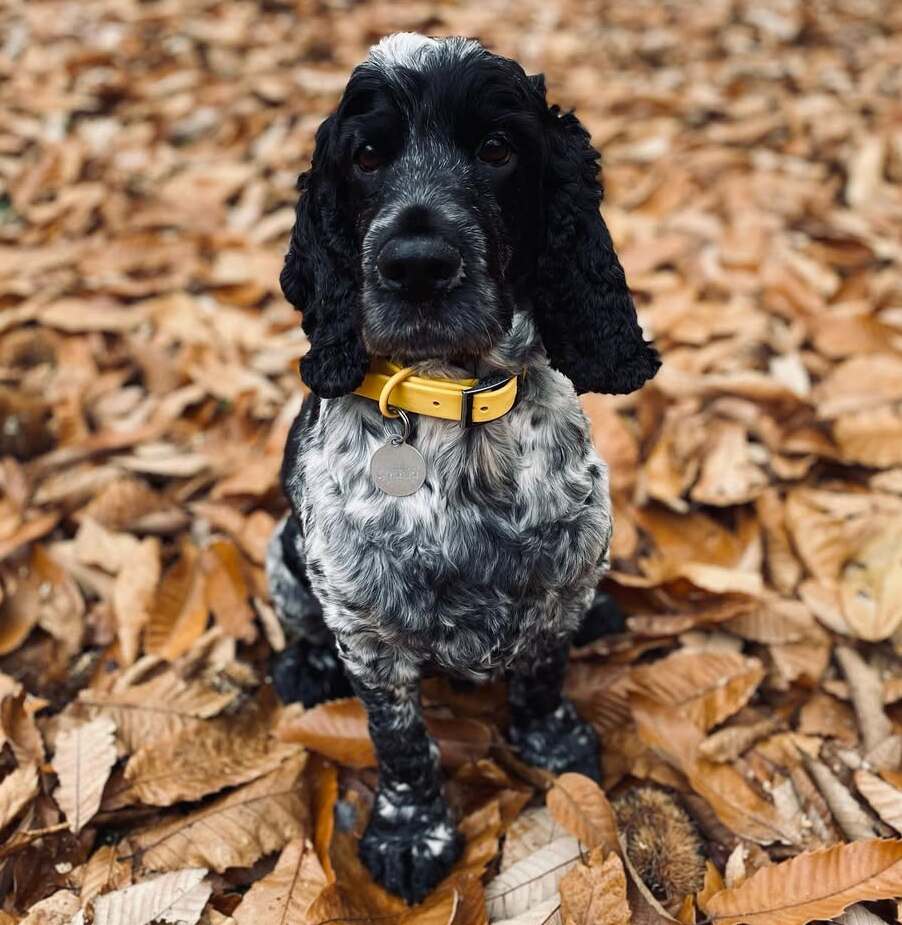Advice for New Paw Parents
At 8 weeks old, most puppies see collars as a dreaded restraint imposed by strangers. Depending on how you welcome your new puppy into your life, they likely haven’t worn a proper collar yet and haven’t bonded with you as their new family. So, you might want to think twice before simply slipping a dog collar on them—unless you're ready for your first-ever family tiff!
Here are our recommendations for the best way to introduce your puppy to a life wearing their designer dog collar.
Introductions First
Think about it: Your puppy has just undergone profound changes in their life, with new people and a new home in a new location. That’s a lot to take in! So, when introducing your puppy to their dog collar, get off on the right foot by letting them sniff and explore their collar before putting it on. We recommend doing this in an environment with minimal distractions so your pup’s attention is focused on you.
Tip: Don’t leave the collar with your puppy unsupervised! They don’t know it’s not a chew toy…

Puppy-Sized Steps
So what’s next? You might think the next logical step is for your puppy to wear their collar—and you’d be partly right. When fitting their collar for the first time, don’t buckle it up entirely and keep it a little loose. This way, your pup can start to feel comfortable wearing it without being irritated with something unusually tight around their neck.Tip: Use your happiest ‘puppy voice’ to verbally reward your pup when you first fit their collar so they think they’ve done something praiseworthy and focus on you and your voice rather than the collar.
Create Positive Associations
Yes, we’re telling you to bribe your puppy! Most puppies are incredibly motivated by food and treats, so reward your pooch while they are wearing their collar. This will send the clear message that their collar is a wonderful thing, not something to be feared. Make sure you also verbally praise them with the positive reinforcement commands you’ve chosen to use, like “good boy/girl!”, “nice!” and “yes!”.Tip: Ensure your treats are small and soft because your puppy will be teething. You could even soak their regular puppy kibble in some water to soften it.
Tip: Feed all their treats from your hand. This will teach your puppy that you are the source of their rewards, which will help them bond with you and see you as the leader of the family (or, as they see it, their pack).
 Credit: @sinatrathecavoodle
Credit: @sinatrathecavoodle
Normalise Wearing Their Collar
Your puppy doesn’t know they’ll be wearing a collar for life, so the best thing you can do is normalise your puppy wearing their collar for everyday activities, like eating, sleeping, and playing. Keep a close eye on your puppy for the next couple of days to observe how comfortable they are wearing their collar.When you think that your puppy is ready, tighten their collar so it fits more snuggly. We recommend following the two-finger test to fit their collar the right way, as poorly fitted collars can spiral into a whole mess of problems!
How do I know when my puppy is happier wearing their collar? Watch for when your puppy stops these common behaviours:
-
Pawing at their collar
-
Rubbing their body against objects
-
Rolling excessively on the ground
-
Scratching their neck with their hind legs
 Credit: @allandyadventures
Credit: @allandyadventures
It’s Not Over Yet!
The last stage of your puppy’s collar training is to closely monitor them, which we’re sure won’t be a hard ask, as you probably can’t bear to part with your cute new family member. In particular, watch for any chewing behaviour while your puppy is teething. If you notice that your pup wants to try to chew their collar, direct their attention straight away to a chew toy. Read more on how to protect your dog gear from puppy chews and wear here.
We recommend never leaving your puppy alone for the first few weeks so you can monitor their behaviour and easily correct any bad behaviour. This is an excellent opportunity to teach your pup the meaning of “no” and set some ground rules in the house before all chaos breaks loose!


